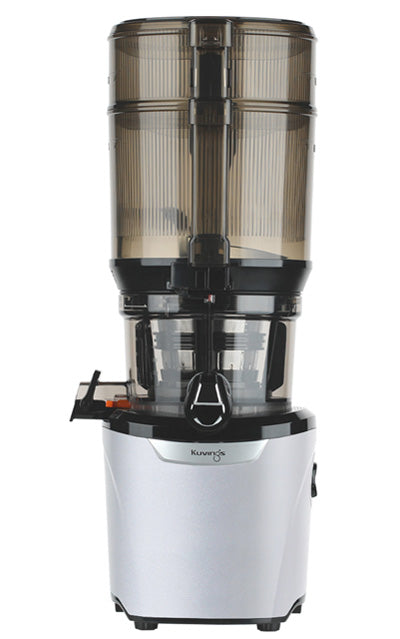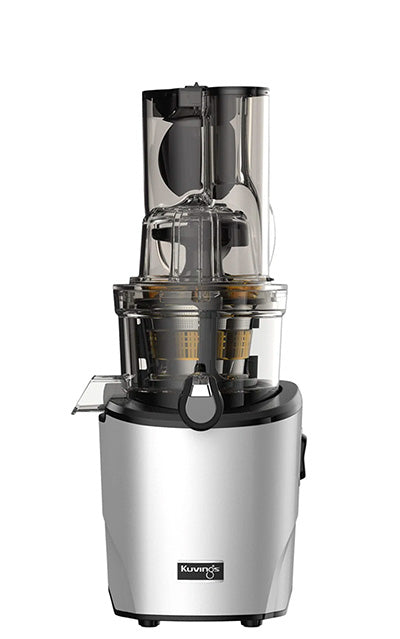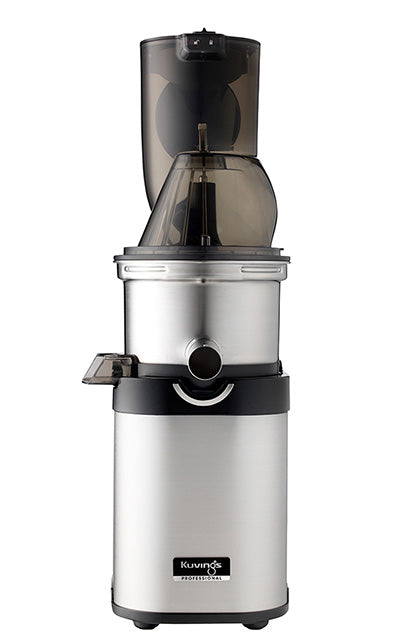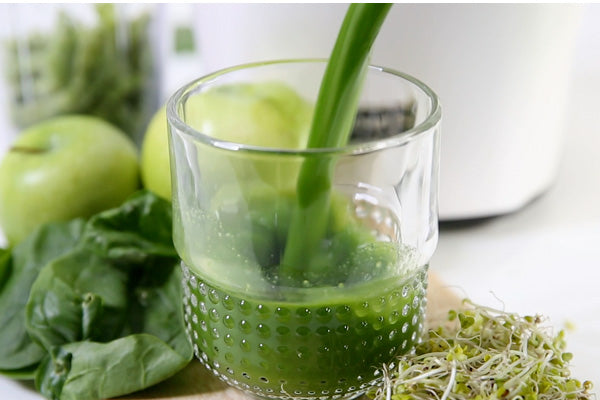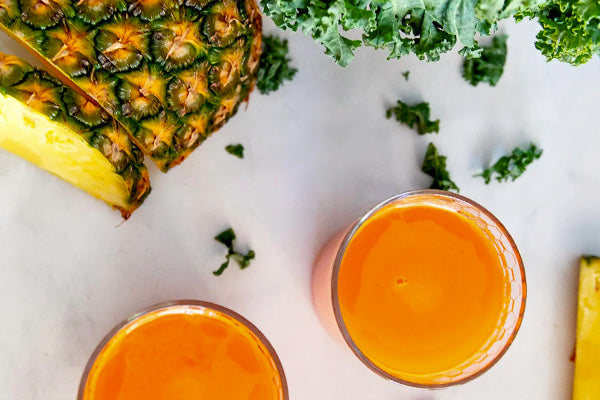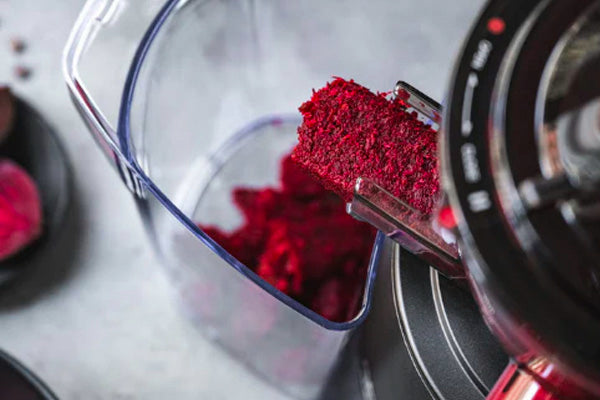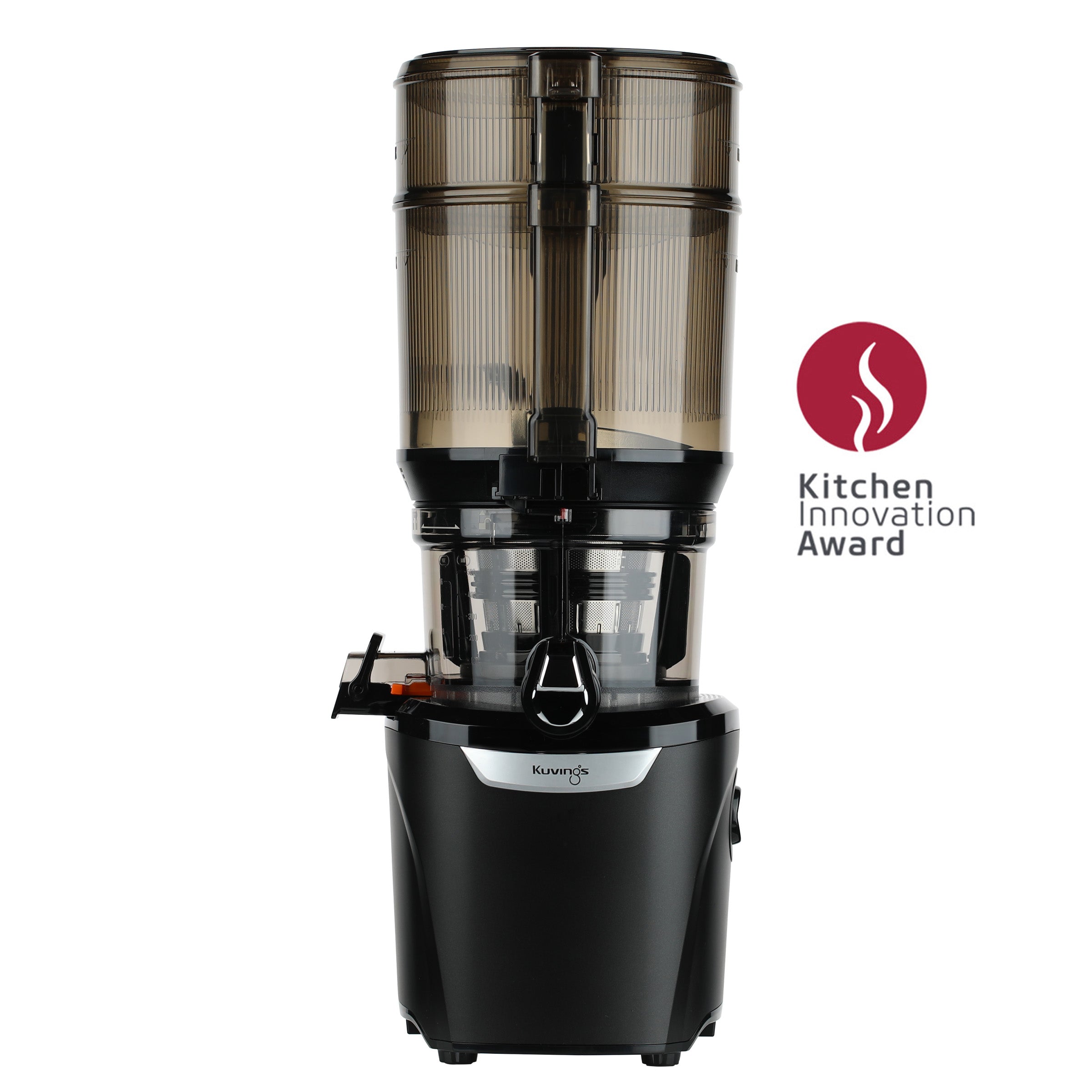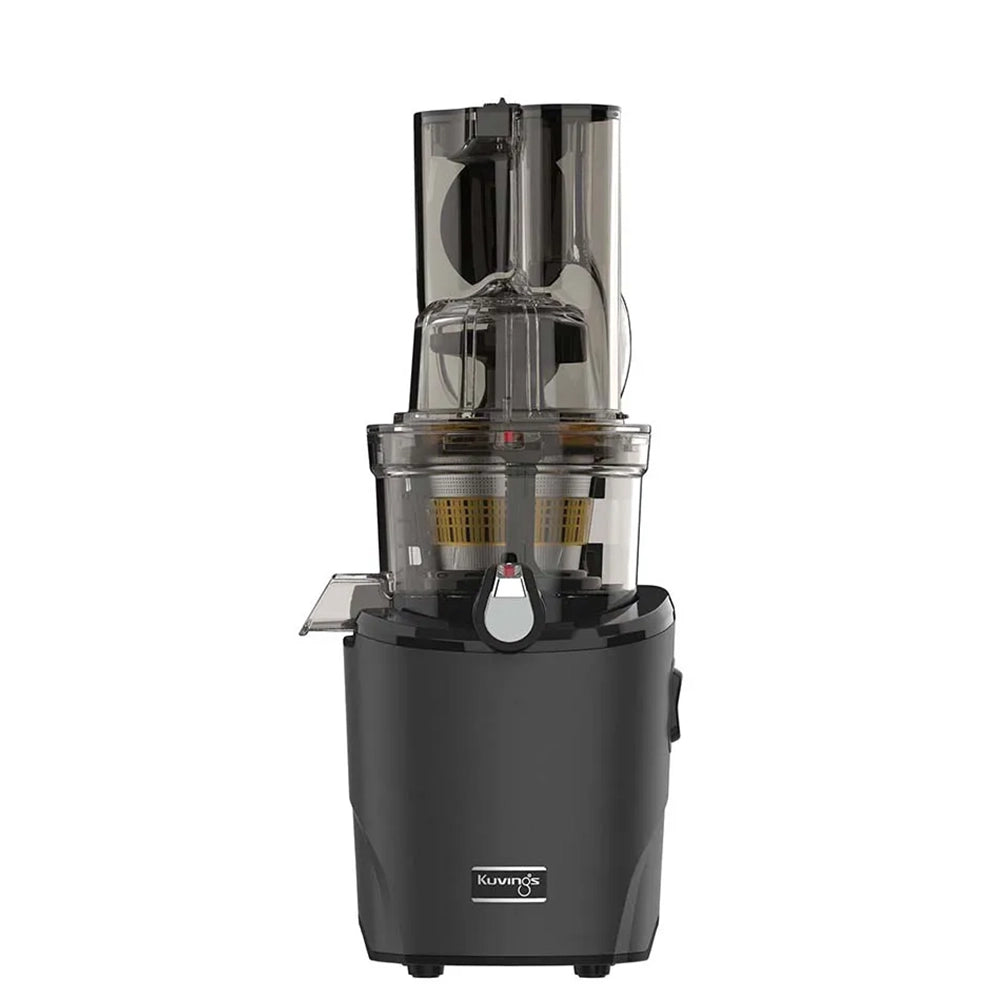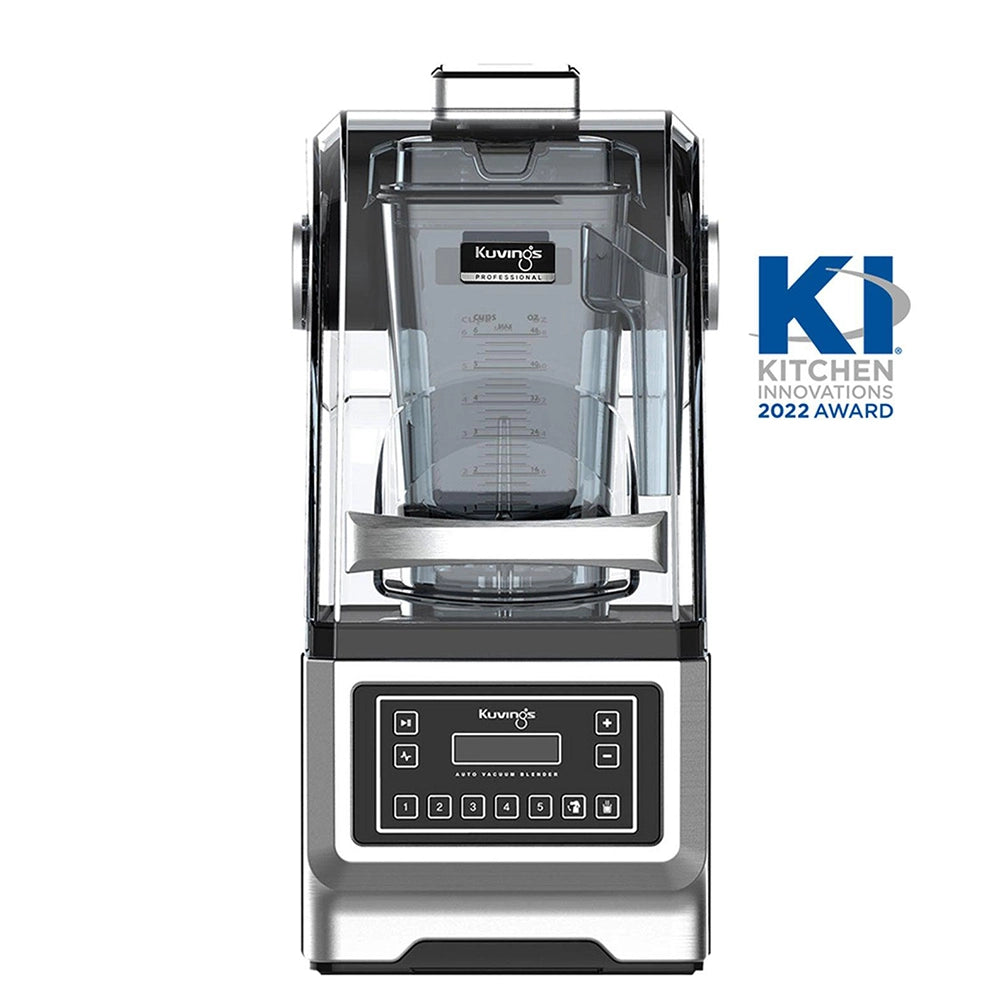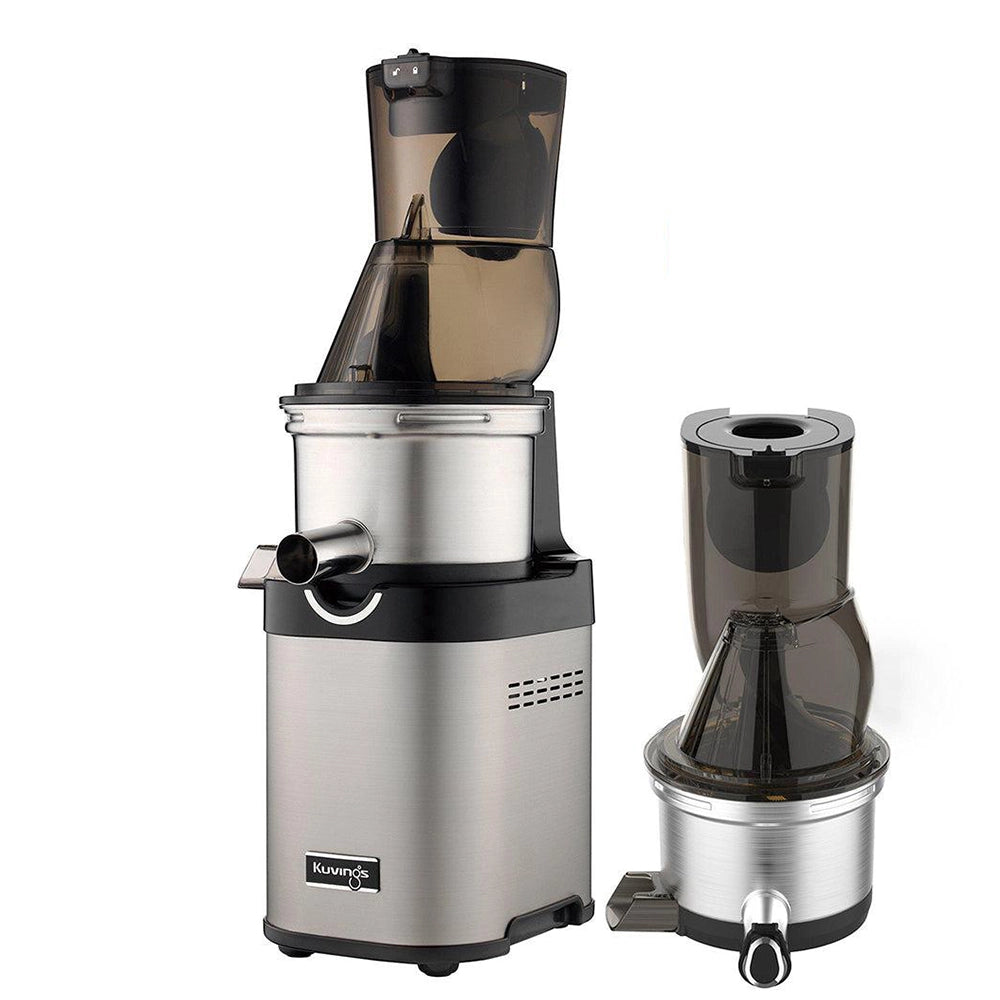Juicing berries isn't quite like juicing apples and carrots. Their consistency, yield, flavor, and pulp create a unique juicing experience.
In this guide, we will walk you through what to expect and how to make berry juice work for you. You will also find tips for modifying the juice texture, reusing the pulp, and more!
Consistency
Berry juice has a thicker consistency compared to a typical cold-pressed juice.
While thicker, it’s not the same as a purée or smoothie; it still has the smoothness of regular cold-pressed juice. Kuvings juicers fully filter out small seeds and solid fibers, making seedless, not gritty, berry juice.
So why is berry juice thicker than usual? Berries are high in fiber and contain less water than water-rich fruits such as watermelon and cucumber. Low-pulp, high-water ingredients produce thinner juices, while high-pulp, low-water ingredients produce thicker juices.
But a thicker consistency isn't necessarily a bad thing! A thicker berry juice is creamy, filling, and still digests faster than a smoothie. You can also use berry juice to make a smooth, seedless berry jelly or add coconut water to the juice to make it thinner!

Yield
Berries yield less juice because of their small size. Therefore, you need to juice many berries to achieve a higher yield.
Strawberries produce the highest yield because they have the highest water content at 91%. They are also larger and firmer than other berry types, making them the best berries for juicing.
We always recommend juicing fresh and firm produce, but it's especially crucial for berries. Because they're already low-yield, the only way to maximize their yield is by juicing ripe berries. They contain more water, and their firmness makes them easier to press with a cold-press juicer.
Look for plump berries with a deep, consistent color, as they're ripe and the best ones for juicing.
You can also use a special trick to determine the ripeness of blueberries. Pour them into a bowl of water to see which berries sink or float. The blueberries that sink are ripe because they contain more sugar, making them denser. The ones that float aren’t ripe yet.
Flavor
Many berries exist, ranging in flavors from sweet to tart to tangy.
Regardless of the berry used and its flavor, berry juice always tastes rich, strong, and decadent. So even if you get a low yield from berries, their flavor remains prominent in your juice.
Berry juice's strong flavor makes it a great addition to other drinks. For example, you can use blueberry juice to make a delicious blueberry matcha latte.
Pulp
One surprise when juicing berries? The pulp is unusually wet.
The wetness comes from the pectin in berries. Pectin is a thick, gel-like substance that holds onto the water in berries. Pectin makes it difficult to separate the juice from the pulp.

To avoid wasting the yield, you can run the pulp through your juicer, allowing it to squeeze out more juice from the pulp. Be mindful that second-pressed juice may be frothy since it's extracted from mostly fiber and pectin.
Another way to avoid waste is by using the pulp for other recipes.
A benefit of berry pulp is that its wetness retains some berry flavor. This makes berry pulp great for adding taste and texture to yogurt parfaits, jams, and baked goods like pies.

Conclusion
Juicing solely berries creates a creamy, decadent juice of lower yield and wetter pulp.
If these results don’t match your preferences, try juicing berries with firmer, water-rich ingredients. These ingredients create a thinner consistency, higher yield, and drier pulp.
We discussed juicing berries and other soft fruits in our “How to Juice Soft Fruits” blog. Read it now!

